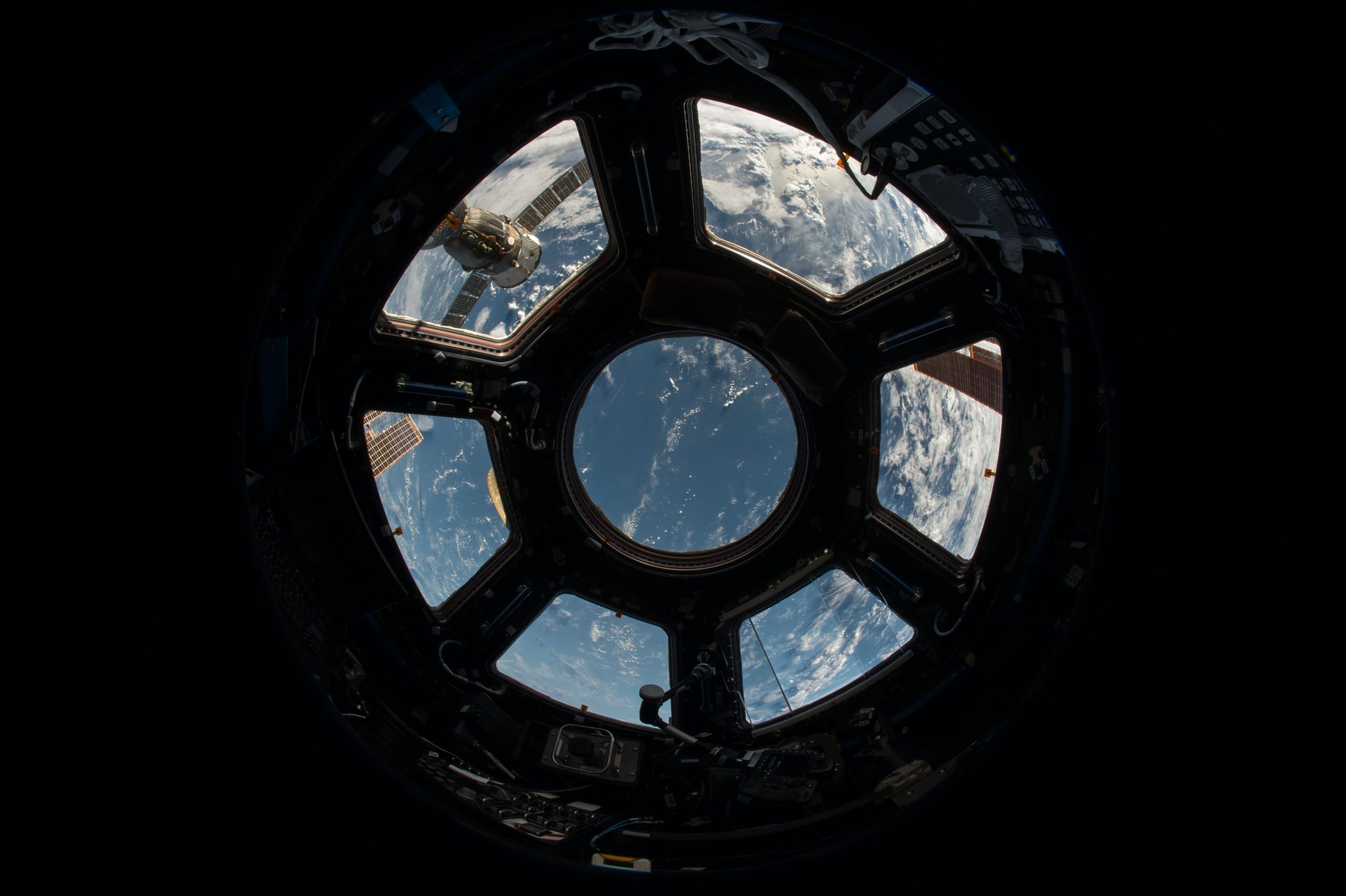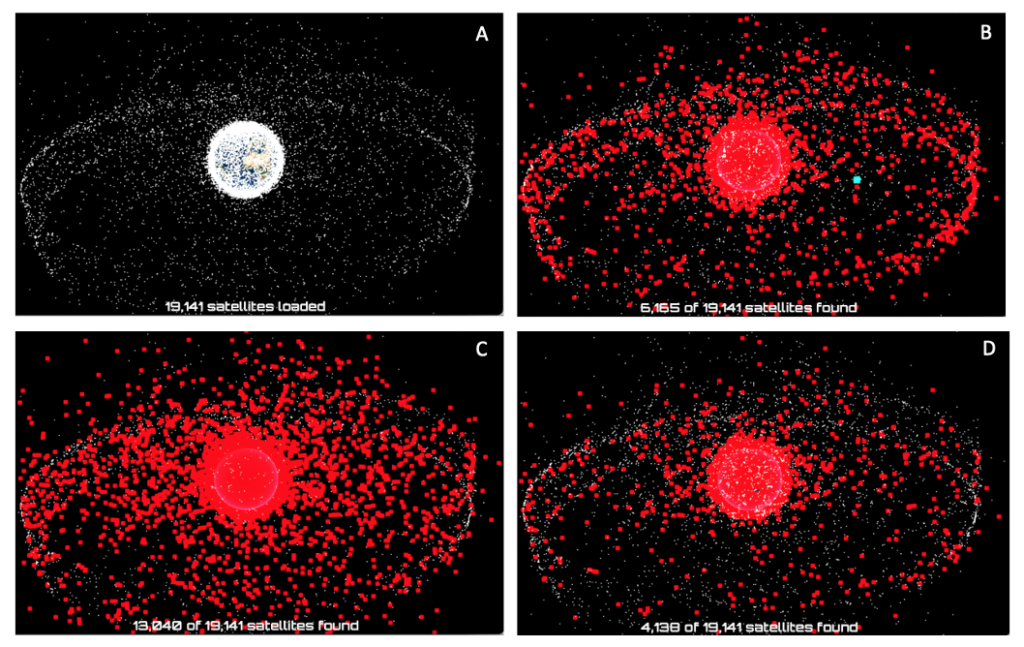
Taking Out the Space Trash: Creating an Advanced Market Commitment for Recycling and Removing Large-Scale Space Debris
Summary
在接下来的几十年中,美国的空间行业将发展成为该国最重要的民事,国防和商业基础设施提供商之一。但是,这个近5000亿美元的市场受到日益严重的问题的威胁:太空垃圾。数十年来,非经营卫星和其他大规模碎片物品已在太空中积累了数十年,作为一种天体的垃圾场,对未来的业务努力构成了严重的安全风险。当公司推出GPS,Internet服务和军事行动所需的新卫星进入地球下轨道时,他们可能会在人口拥挤的氛围中与死机相撞。虽然最后一颗主要的卫星碰撞是十年前的,但直到下一个发生才是时间问题。随着空间交通密度的增加,科学家项目这种碰撞(结果以及基于卫星的服务的丢失)将逐渐成为问题和频繁的。
由于空间行业的创新速度,太空商业化的速度超过了联邦政府的监管范例。因此,美国政府应为企业提供直接解决空间碎屑问题的手段。为此,联邦通信委员会(FCC),国家航空和太空管理局(NASA),美国太空部队和商务部(DOC)应为回收和放下大型卫星和大型卫星和大型市场做出高级市场承诺大小的碎片。通过通过金融刺激,新的监管和持续的市场生态系统激励企业,联邦政府可以以增强国家经济增长的方式来减轻空间碎屑问题。
挑战和机会
地球外的可持续性和安全性rbit and the future success of launch missions depend on the removal of sixty years’ worth of accumulated space debris. The space debris population in the lower-Earth orbit (LEO) region has reached the point where the environment is considered unstable. Over8,000公吨死者,人类沉积的物体绕行了,包括超过13,000颗已解决的卫星。尽管这种累积的垃圾是众多国家航天活动的产物,但不可否认的是美国大贡献者解决问题。大约30%的轨道,功能性卫星属于美国。因此,作为一个国家,我们有责任直接应对太空碎片挑战。

空间正散布着死卫星,美国是主要贡献者。在1950年至2020年之间,已经发射了超过19,000颗卫星,目前在地球上轨道(瓷砖A)。上面的瓷砖B中的红点代表了美国的死亡和活跃,由美国拥有和发射的卫星。轨道上的所有卫星中有近70%被归类为“垃圾”(瓷砖C)。美国是卫星垃圾的最大贡献者之一,仅次于俄罗斯(4,138颗卫星与4,714;瓷砖D)。(来源:使用ESRI卫星数据)
由于美国商业太空领域的快速增长是可能进一步加剧空间碎屑问题。新技术进步意味着它是cheaper than ever制造和推出新卫星。此外,最近的改进火箭工程和设计提供更多经济的选择,以将有效载荷进入太空。这种不断变化的成本环境意味着空间行业不再被选定的大型跨国公司垄断。相反,较小的企业现在面对进入进入的障碍更少for satellite deployment and have an equal opportunity to compete in the market. However, since space debris management is not yet fully regulated, this increased commercial activity means that more industries may be littering LEO in the near future.
America’s mounting demand for satellite-based services will congest LEO’s already crowded environment even further. The U.S. defense sector in particular requires further space resources due to their reliance on sophisticated communication and image-capturing capabilities. As a result, the Department of Defense (DOD) has开始招募太空工业通过增加LEO的卫星部署来提供这些服务。此外,COVID-19大流行具有增强了消费者需求用于基于卫星的互联网。作为回应,space industries are racing为了扩展宽带进入农村地区和远程人口的访问,拜登政府希望通过Bipartisan Infrastructure Deal。Overall, this combined demand for commercial satellite services from the American public and federal government means that more launches will occur in the years ahead and add to the ongoing debris issue.
The worsening congestion in outer space is a严重的滋扰for America’s space industry. Floating trash in LEO creates an immediate physical barrier to commercial space activity. Rocket launches and payload delivery must first chart a safe flight that avoids collision with pre-orbiting objects, which, given the growing congestion in LEO, will only become more difficult in the future.
空间碎片问题也是严重的安全风险,有一天可能在灾难中结束。如果空间流量变得太密集,两个大物体之间的单一碰撞可能会产生数千个小规模碎片的云。这些碎片反过来可以充当致命的导弹,撞击了轨道上的其他物体,从而造成了更多的碰撞碎片。这串联的破坏,称为Kessler Syndrome,最终导致狮子座充满了无法控制的弹丸饱和,这使得不可能进一步发射,探索和开发。这种情况的金融,工业和社会后果将是毁灭性的。

预计在未来几年中,太空碎片,尤其是碰撞引起的碎屑。该图中的线表示可跟踪的低地球轨道(LEO)对象的数量(基于基于NASA的数学模拟)。蓝线代表火箭的身体,航天器和其他与发射有关的垃圾,这些垃圾尚未经历过分手。棕线代表爆炸引起的碎屑,这是由给定设备的内部故障引起的。粉红色线代表两个或多个物体在轨道上相互碰撞的物体产生的碎屑。(来源:科学杂志)
如果要在发展和行业中仍然是可行的环境,则必须解决空间碎屑问题。NASA和其他太空机构已经表明five to ten of the most massive debris objects必须每年删除,以防止空间碎片堆积失控。大气阻力(唯一的自然空间清理过程)的轨道衰减不足以去除大型碎屑。实际上,由于表面侵蚀可能会导致较小的碎屑抛弃,因此轨道衰减可能会加剧大量碎屑物体带来的问题。因此,必须手动进行清理和清除大量碎屑物体。
According to the国家太空政策, the U.S. government can “develop governmental space systems only when it is in the national interest and there is no suitable, cost-effective U.S. commercial or, as appropriate, foreign commercial service or system that is or will be available.” As such, any future U.S. space cleanup program must actively involve the space industry sector to be successful. Such a program must create an environment where space debris removal is a competitive economic opportunity rather than an obligation.
Presently, an industrial sector focused on space debris removal and recycling—including on-site satellite servicing, in-orbit equipment repair and satellite life extensions, satellite end-of-life services, and active debris removal—remains nascent at best. However, the potential and importance of this sector is becoming increasingly evident. The U.S. Defense Advanced Research Projects Agency’s地球同步卫星的机器人服务计划旨在廉价回收仍在运行的已停产卫星,并将其纳入新的太空系统中。美国跨国公司和国防技术公司Northrop Grumman以及许多其他中小型企业都拥有正在进行的项目建立轨内回收系统以降低新卫星发射的成本和风险。但是,需要联邦干预以迅速刺激该部门的进一步增长并应对以下挑战:
- The cost of active space debris removal, satellite decommissioning and recycling, and other cleanup activities is largely unknown, which dissuades novel business ventures.
- 太空法可能会被卷议,并获得卫星和拥有或再利用的材料的权利是有争议的。为了产生成功的大规模碎片缓解经济,必须通过安全网进一步定义业务规范和法规。
- 需要将造成最大碰撞风险的大碎片物体优先考虑以进行退役。这些对象尚未确定,也没有确定其清理工作。
行动计划
为了应对上述挑战,联邦政府内部的多个办事处将需要协调和支持美国太空行业。具体而言,他们将需要使用经济激励措施和新的监管机制来支持该新兴市场,以对清除空间碎片的清除和回收作出高级市场承诺。为了实现这一目标,我们建议以下五个政策步骤:
建议1.联邦通信委员会(FCC),联邦航空管理局(FAA)和国家海洋与大气管理局(NOAA)应合作,为美国太空工业提供标准的方法,以确定哪些卫星一旦到达一旦到达他们生命周期的结束。
卫星和大碎片物体回收和清除行业仍然很小的原因是市场很小。可以通过为卫星提供商和运营商创建经过验证的系统来发展市场,以表明一旦任务完成,辅助服务提供商就可以回收或退役。为了鼓励广泛使用该选修注册系统,需要激励并将其纳入正在进行的卫星和火箭监管方案中。
由于联邦对太空活动的权力随着时间的推移而发展,因此多个联邦机构目前对商业太空行业进行规范。FCC许可商业卫星通信,FAA许可证商业发射和再入车辆(即火箭和空间平面图)以及商业太空港以及NOAA许可证商业地球遥感卫星。这些机构必须合作开发标准的集中注册系统,以促进卫星回收。
行业将需要激励措施才能选择进入此注册系统,并将其设备标记为可回收和退役的可行性。关于前者,应将回收登记机制纳入联邦发布会或预许可方案中。关于后者,FCC,FAA和NOAA可以:
- Coordinate with satellite and space insurance industries to offer reduced premiums to those who elect into the registration system.
- 与卫星和太空保险行业协调,为追溯入学的轨内卫星提供补贴。
- 提供对注册卫星和火箭的优先许可或加急有效载荷发布。
Recommendation 2. NASA’s Orbital Debris Program Office (ODPO), in coordination with the DOD’s Space Surveillance Network, should create a prioritized list of massive space debris items in LEO for expedited cleanup.
火箭物体,无功能卫星和其他大碎片是狮子座总轨道碎片质量最高百分比。由于这些物体通过碰撞和腐烂产生额外碎屑的最高风险,因此减少在Leo的住宿是当务之急。但是,鉴于较旧碎片物品的空间碎屑连续产生,有时甚至是不确定或脆弱的所有权,联邦政府需要建立公众并定期更新“大范围的批判性”指数。该指数将根据(i)通过侵蚀或碰撞产生额外碎片的能力,使大量碎片物品具有风险评估评分,(ii)删除的可行性,(iii)其所有权状态以及(iv)其他风险因素。在NASA ODPO发布其发行之前,将其放入轨道的物体standard debris mitigation guidelines需要追溯评估。
通过创建和定期更新该公共指数,联邦政府将使公共和私人参与者更容易确定需要优先考虑哪些碎屑物品才能清理,涉及哪些风险以及成功拆除的成功所需的技术。
建议3.与商务部(DOC)合作的太空部队应每年资助拆除和/或回收一定数量的大碎屑对象,从而为去除太空碎片的可靠市场。
通过承诺完全或部分资助NASA-recommended每年清除五到十个大碎屑物品,太空部队和DOC将降低业务进入轨道碎片清除市场的风险,并为缓解太空碎片造成持续的市场经济。这些机构为清除碎屑提供的特定货币奖励可以与碎屑项目的性质和大小,去除速度和去除方式相称。可以提供额外的支出,以清除高优先级的大碎屑物品(例如,在上面的建议2中确定的项目),或用于可持续进行的碎屑清除(例如,以回收或重复使用零件而不进行的方式,产生次要的,较小的碎片)。
建议4.太空部队 - 太空系统命令应与NASA的小型企业创新研究和小型企业技术转移(SBIR/STTR)计划进行协调,以发出旨在促进未来卫星回收工作的基于卫星设计的大挑战。
Grand challenges are popular and often effective tools for stimulating public interest in a given issue and advancing technologies. However, they can fall short of creating a sustainable, long-lasting commercial industry. The Space Force and NASA can overcome this difficulty by designing a grand challenge wherein: (i) research and development costs are shared among private and public participants; (ii) multiple winners are selected at the end of the challenge; (iii) winners are chosen based on whether they meet government capability thresholds in addition to being commercially viable; and (iv) challenge winners are guaranteed a long-term government service contract.
For this grand challenge, Space Force and NASA should encourage the creation and, afterwards, widespread commercial use of satellite design strategies that facilitate satellite recycling, mission extension, or deconstruction. Specifically, the design challenge should focus on:
- Providing enhanced protection against mission-ending impacts by small orbital debris.
- 生成标准化的功能(例如,对接机制),这些功能允许将来的维修设备锁在轨道上进行维修,解构和回收。
- 制作模块化和可扩展的组件,可以轻松地将其换成,卸下和更换,从而导致下游回收和修复。
Recommendation 5. NOAA’s Office of Space Commerce, in conjunction with the Space Force and NASA’s ODPO, should jointly issue an annual research report outlining risk, cost-benefit analyses, and the economics of orbital debris removal and recycling.
For the growing number of debris recycling and satellite maintenance industries, large orbital debris represent a potential source of valuable materials and resources. While it is theorized that repurposing or salvaging these large debris objects may be more cost effective than de-orbiting them, exact costs and benefits are often unspecified. Additionally, the financial repercussions of accumulating space debris and collisions are largely unknown.
如果行业知道清除太空碎片的前期费用和潜在的利润,那么碎片清除市场的风险将大大降低,更有利可图。NASA,NOAA和太空力量可以通过共同创建更好的工具来评估轨道碎片对未来空间使用(包括商业开发和投资)的风险和成本来填补该信息差距。
结论
美国航天工业的发展,potential, end-of-life satellites and other orbiting dead equipment need to be cleared from Earth’s lower orbit. Without removing these items, the increasing possibility of a severe in-orbit collision poses a major security risk to civilian, military, and commercial infrastructure providers. By creating an advanced market commitment for recycling and de-orbiting large-sized debris items, the federal government does more than just address the growing space debris problem. It also creates a new market for the U.S. space industry and stimulates further economic growth for the country. Additionally, it encourages greater public-private collaboration as well as consistent communication between crucial offices within the U.S. government.
全球太空治理非常复杂,因为没有任何一个国家享有该领土的权利。因此,空间活动广泛地由联合国条约(例如1967年外太空条约和1979年的月亮协议。尽管这些条约为和平使用空间制定了重要的准则,但它们无法解决当今的重要关注点,例如管理太空碎片和私营企业活动。因此,这些条约无法完全指导太空商业化的现代挑战。同样重要的是要注意,外交官花了将近十年的时间达成协议并批准了这些条约。因此,重新审视外层空间条约或制造新条约所需的时间表太慢,无法完全匹配当今太空活动正在发展的突破速度。鉴于美国空间行业在塑造外太空行为和规范中的影响力,有效地解决了空间碎片问题将需要美国太空行业部门的参与。
2018年,美国联邦航空局(FAA)估计了美国太空行业的价值大约1580亿美元。从那以后,太空经济一直在增长,主要是由于a record period of private investmentand新的投资者机会in spaceflight, satellite, and other space-related companies. As a result, the space industry was valued at4240亿美元在2019年。到2030年,人们认为航天行业将成为美国经济中最有价值的部门之一,预计价值在1.5至3万亿美元之间。
这一切都与成本有关。私人太空公司之间的竞争意味着将设备推入太空比以往任何时候都要便宜,这为企业创造了许多机会,以满足对替代供应链路线和基于卫星的互联网连接的不断增长的需求。
从1970 - 2000年开始,将一公斤材料推向太空的成本保持稳定,主要由NASA确定。当NASA的航天飞机舰队运行时,它可能会发动有效载荷27,500公斤,15亿美元(每公斤54,500美元)。如今,SpaceX的Falcon 9 Rocket宣传的成本仅为$62 million to launch 22,800 kilograms($2,720 per kilogram). In other words, commercial launch has reduced the cost of getting a satellite into LEO by a factor of 20. Additional developments in reusable rocket technology may decrease that cost to just500万美元将来。卫星技术和大规模生产的改进将进一步降低成本并使更多发布成为可能。预计卫星质量生产技术可能会从每卫星5亿美元至50万美元。
降低成本会导致火箭和卫星发射速度提高,从而增加空间碎片的积累。
If the satellites in question are active, fully functioning, and capable of maneuvering, then to an extent—yes. Satellites can be remotely programmed to change course and avoid a collision. Even under these circumstances, though, these objects adhere to the laws of physics; it can take a lot of energy to alter their orbit to avoid a crash. As such, most satellite operators require hours or days to plan and execute a collision avoidance maneuver.
但是,并非所有活动设备都有能力进行操作。无法控制无活动或死亡的对象。因此,绕行碎片是无法控制的。
迄今为止,还没有官方或国际认可的“太空交通管制”机构。在美国,在众多政府机构甚至某些公司之间,对太空交通监视的责任均分担。
卫星和火箭不是为处置而设计的;它们的设计旨在承受离开地球大气层时经历的巨大空气动力,热量,阻力等。此外,许多卫星都使用增援部队建造,以维持轨道并承受与太空碎片的轻微碰撞。因此,目前在太空中分解,回收和修复卫星非常具有挑战性。
LEO定义为靠近地球表面的区域(160至1,000公里)。由于卫星的多种原因,该领土尤其可行。首先,到达地球的距离意味着在轨道上卫星的燃料较少,这使狮子座成为太空行业最便宜的选择之一。其次,狮子座的卫星并不总是必须沿着地球赤道周围的严格道路。他们可以遵循倾斜和角度的轨道路径。这意味着在狮子座中有更多可用的卫星飞行路线,使其成为太空工业的吸引人领域。结果,大多数卫星以及大多数卫星垃圾位于狮子座。(请参阅杂物的挑战和机会中的第一张图像)。
较小的碎片在外太空中的数量较大。根据美国国家航空航天局(NASA)的说法,大约有23,000块碎屑大于旋转地球的垒球。有500,000块大理石的碎片(最高0.4英寸或1厘米),约1亿块碎片,约为0.04英寸(或1毫米),更大。千分尺尺寸(直径为0.000039)的碎片更加丰富。这些小型空间碎片可能以17,500英里 /小时的速度行驶,这意味着它们在碰撞过程中可能会造成大量损坏。
显然(请参见下图),小碎片也是一个重大的安全风险,应包括在空间碎片清理方面。但是,无法跟踪小规模的碎屑轨道,“捕捉”这些小速度对象的具体挑战以及严重缺乏可靠的信息on small-sized space debris means that this aspect of space debris mitigation will likely require its own unique policy actions.
We presently have more data on large-sized debris, and these items pose对正在进行的太空努力的最大威胁,他们应该碰撞。因此,该备忘录首先关注针对这些碎片项目的政策行动。
《筹码与科学法》对美国创新和基于地点的工业政策建立了令人信服的愿景,但是这种愿景已经受到严格的资金的阻碍。
以下是筹码和科学资金在与联邦预算的战斗中塑造的方式。
即使COVID紧急情况已经结束,个人外观豁免也应成为低风险案件中的常规政策。
在发布像GPT-4到数百万用户这样的新型,强大的系统之前,我们必须问:“我们怎么知道该系统是安全,值得信赖且可靠的,可以发布?”